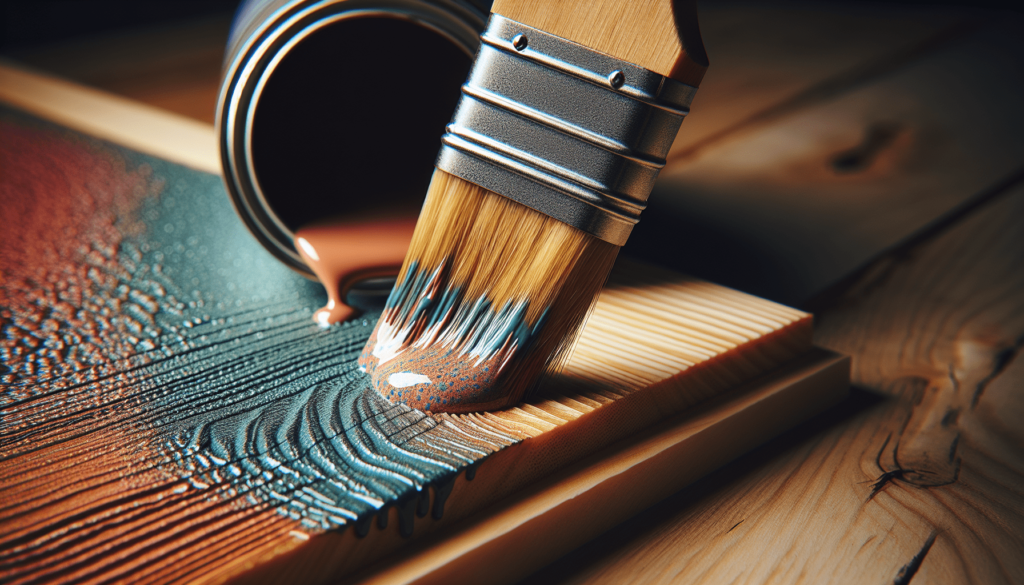Enamel paint is a popular choice for various surfaces due to its durability and glossy finish, but when it comes to wood, there is often confusion about its compatibility. Many wonder if enamel paint can indeed be used on wood or if it is only suitable for metal or other materials. In this article, we will explore the intricacies of using enamel paint on wood, discussing its benefits, limitations, and the necessary preparations to ensure a successful application. By the end, you will have a clear understanding of whether enamel paint is a viable option for your next wood project.
Can You Use Enamel Paint On Wood?

Enamel Paint: An Overview
Enamel paint is a type of paint that is known for its durability and high-gloss finish. It is made with a resin that has a glossy, hard, and smooth finish when dry. Enamel paint is commonly used on metals, ceramics, and glass due to its ability to withstand wear and tear, as well as its resistance to chipping and fading. However, many people wonder if they can use enamel paint on wood.
Properties of Enamel Paint
Enamel paint is characterized by its ability to adhere well to various surfaces, including wood. It provides a tough and durable finish that is resistant to moisture, stains, and scratches. Enamel paint also offers excellent coverage, allowing you to achieve a smooth and even finish with fewer coats compared to other types of paint.
Preparing the Wood Surface
Before applying enamel paint on wood, it is important to properly prepare the surface to ensure optimal adhesion and a smooth finish. Start by cleaning the wood to remove any dirt, dust, or grease. Sanding the wood surface lightly with fine-grit sandpaper can help remove any rough spots and create a surface that the enamel paint can adhere to more effectively. After sanding, wipe away any sanding residue with a clean cloth or tack cloth.
Applying Enamel Paint on Wood
To apply enamel paint on wood, you can use either a brush, roller, or spray gun, depending on your preference and the size of the project. Make sure to apply thin and even coats of paint, allowing each coat to dry completely before applying the next. This will help prevent drips, runs, and a patchy finish. If necessary, you can lightly sand between coats to ensure a smooth surface. Follow the manufacturer’s instructions for drying and curing times, as well as any recommended temperature and humidity conditions.

Benefits of Using Enamel Paint on Wood
Using enamel paint on wood offers several advantages. Firstly, enamel paint provides a durable and long-lasting finish that can withstand regular wear and tear. It is resistant to chipping, peeling, and fading, which allows the wood to maintain its look and protection for an extended period of time. Enamel paint also provides a high-gloss finish, giving the wood a polished and professional appearance. Additionally, enamel paint offers excellent coverage, saving you time and effort during the painting process.
Considerations for Using Enamel Paint on Wood
While enamel paint can be used on wood, there are a few considerations to keep in mind. One important factor is the type of wood you are working with. Some types of wood, such as cedar or redwood, contain natural oils that can interfere with the adhesion of the paint. In such cases, it is recommended to apply a primer specifically designed for wood before using enamel paint. Another consideration is the exposure of the wood to external elements. If the wood will be exposed to moisture, extreme temperatures, or direct sunlight, it is advisable to choose an enamel paint that is specifically formulated for exterior use.
Alternatives to Enamel Paint on Wood
While enamel paint is a popular choice for painting wood, there are alternative options available. One alternative is latex paint, which is water-based and offers good adhesion and durability. Latex paint is available in a wide range of colors and finishes, and it is easy to clean up with water. Another alternative is oil-based paint, which provides a durable and protective finish for wood. Oil-based paint offers excellent adhesion and is resistant to moisture and stains. However, it requires solvents for cleanup and may take longer to dry compared to enamel paint.
Tips for Using Enamel Paint on Wood
To achieve the best results when using enamel paint on wood, consider the following tips:
- Always work in a well-ventilated area to ensure proper air circulation.
- Use a high-quality brush or roller to ensure smooth application and minimize brush marks.
- Stir the paint thoroughly before use to ensure even consistency.
- Consider applying a primer specific to wood before using enamel paint for better adhesion.
- Apply thin and even coats, allowing proper drying time between each coat.
- Sand lightly between coats for a smoother finish.
- Protect your work area and surrounding surfaces from paint splatters or spills.
Common Mistakes to Avoid
When using enamel paint on wood, it is important to avoid common mistakes that can affect the quality and longevity of the finish. Some common mistakes to avoid include:
- Applying thick coats of paint, which can lead to drips, runs, and an uneven finish.
- Failing to adequately clean and prepare the wood surface before painting, resulting in poor adhesion.
- Not allowing each coat of paint to dry completely before applying the next, which can cause paint to lift or peel.
- Painting in high humidity or extreme temperatures, which can affect the drying and curing process.
- Neglecting to protect surrounding surfaces, resulting in unwanted paint splatters or spills.
Conclusion
In conclusion, enamel paint can indeed be used on wood, offering a durable, glossy, and long-lasting finish. By properly preparing the wood surface and following the recommended application techniques, you can achieve a professional-looking result. However, it is important to consider the type of wood, the desired level of exposure to external elements, and to follow the manufacturer’s instructions for best results. Alternatives such as latex paint or oil-based paint are also worth considering depending on your specific project requirements. By taking the time to choose the right paint and applying it correctly, you can enhance the beauty and longevity of your wooden surfaces.



